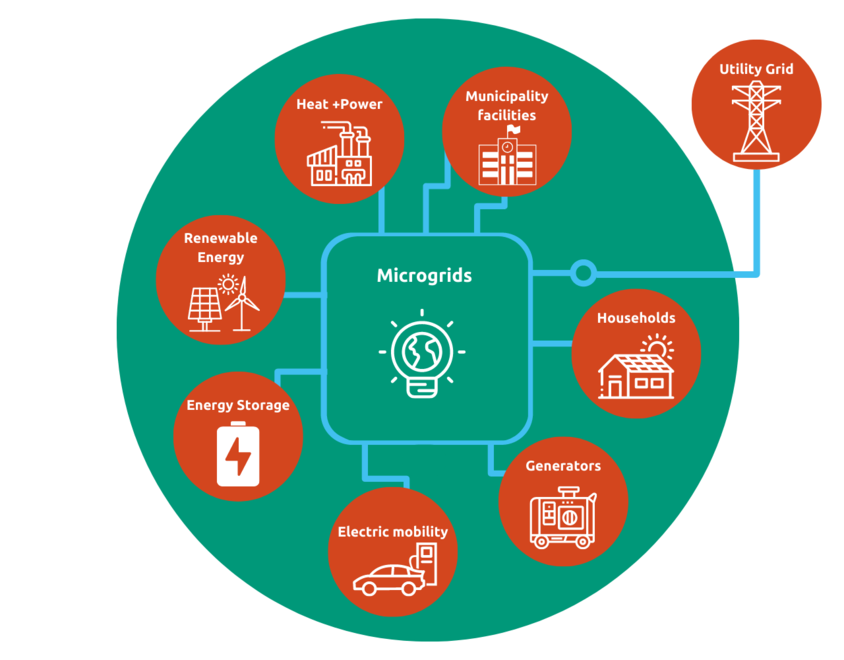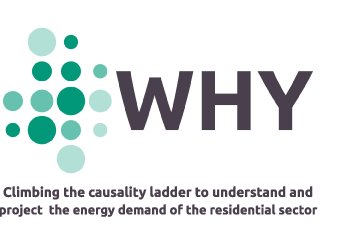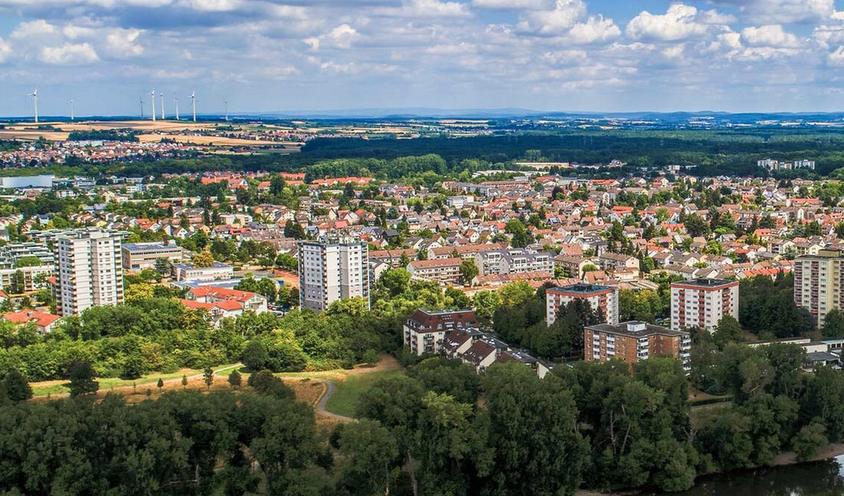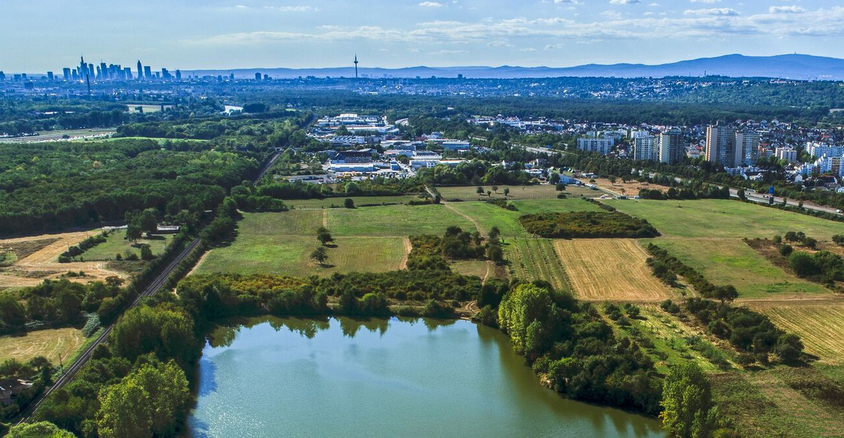Customized Municipal Energy Concept with the WHY Toolkit
The Maintal Use Case
In Germany, municipalities currently are working on mastering the challenge of the energy transition, reducing their CO2 emmissions but still keeping their utilities and household budgets stable. The COVID period, topped with the energy crisis brought local municipality budgets on their knees. The German energy transition in the residential sector heavily relies on municipalities' renewable energy infrastructure, heat transition, and updated energy and climate plans. The energy transition is percieved as a technology-heavy transformation - away from the fossil energy system towards a decentralised, citizen-oriented and regenerative system, where electricity is ideally also generated where it is consumed. According to a recent analysis of the Region-N network, "This transformation will succeed, if citizens and other local actors such as municipal utilities and regional companies are convinced of the meaningfulness and economic benefits of the energy transition and can participate in it as actively as possible.
How to tackle the ambitious and necessary changes in the energy system? In Germany, municipalities and thus also to the districts are now responsible for the rapid implementation of the energy transition. Two challenging fields of action are emerging:
- 2% of the area for wind and PV open space: This target could mean that every municipality in a district (if there are no exclusion criteria) should plan a new wind farm and a larger open PV area, ideally as citizen energy plants. To this end, there should be a rapid exchange in the region and the right strategies should be developed for this."
(In recent news, the German Government plans to make additional areas available for onshore wind power plants in the short term. To this end, the scope for action for municipalities is to be expanded by allowing municipalities to designate areas for wind energy even if the regional plans have not earmarked any wind areas in their territory).
- By phasing out oil, coal and gas, counties and their towns and municipalities will have to invest in municipal heating planning based on renewable energies. To do so, they must build up competencies at the regional level regional level to identify targets and potentials and strategies with regard to heat strategies for heat grids and heat develop strategies.1
The Use Case of Maintal builds on the challenge of transforming a municipality's residential energy system to an environmentally conscious, sustainable energy system. To be able to set up the relevant strategies and implementation plans, WHY can support municipalities and districts with very detailed simulations of household energy and water consumption already before setting up an investment. In Maintal, the WHY toolkit demonstrates one of its main strengths: the finely granulated simulation of household consumption that can be done on the very small scale of a household, up to the entire district. The WHY Toolkit provides the data basis for a more detailed analysis of the household energy consumption. To do so, the so-called "standard load profiles" are used in such planning processes for households, which is also completely sufficient for the definition of an annual energy balance. However, if a higher temporal resolution is desired, the use of standard load profiles can lead to inaccuracies, especially if relatively few users are taken into account. This challenge is met by the WHY Toolkit that provides more detailed simulation incorporating the demographic distribution of households and consequently the energy consumption of residents.
WHY also supports the planning of heat supply in Maintal. A so-called component analysis is carried out, which also has the advantage of a higher temporal resolution. These can also be integrated in other urban planning processes. The planners provide the WHY consortium with the framework conditions from the urban planning, whereupon the WHY toolkit provides the corresponding load profiles and component analysis. This data can then be used for the further planning process to define the technologies and the heating and energy infrastructure for the entire newly built district. This process and toolkit is designed to be easily replicated in other cities, with high scalability potential.
Would you like to learn more?
Climate Alliance visits municipalities and energy agencies in 2023 to demonstrate more.
Sustainable Energy Management for a Sustainable Future
Energy management in municipalities involves the planning, implementation, and monitoring of strategies and practices to reduce energy consumption and costs in municipal buildings and operations. This can include public buildings, street lighting, water treatment plants, transportation systems, and other infrastructure. The goal of energy management in municipalities is to improve energy efficiency, reduce greenhouse gas emissions, and save money on energy bills. This can be achieved through a variety of measures, such as:
- Conducting energy audits to identify areas of high energy consumption and opportunities for improvement,
- Implementing energy-efficient technologies and practices, such as LED lighting, smart building systems, and energy-efficient heating, ventilation and air-conditioning (HVAC) systems,
- Using renewable energy sources, such as solar or wind power, to generate electricity,
- Implementing energy-efficient policies and programs, such as promoting public transportation, encouraging carpooling, and implementing energy-efficient building standards,
- Engaging the community in energy consumption reduction efforts through education and communication.
Effective energy management in municipalities requires collaboration between various departments and stakeholders, such as the mayor's office, public works, climate and energy, transportation department, and community organizations. By working together, municipalities can reduce their energy consumption and costs, while also helping to mitigate climate change and create a more sustainable future. Sustainable energy management can be supported by organizing the energy in decentralised, intelligent microgrids. A microgrid is a small-scale power grid that can operate independently or in conjunction with the main power grid. It typically includes localized power generation, storage, and distribution systems, and is designed to serve a specific community, facility, or geographic area.
Microgrids can use a variety of energy sources, such as solar, wind, geothermal, and biomass, and they may also include traditional fossil fuel generators. The power generated by these sources is stored in batteries or other energy storage systems, which can be used during times when the energy supply is low. One of the main advantages of microgrids is their ability to operate independently from the main power grid. This makes them more resilient during blackouts and other disruptions. Additionally, microgrids can often operate more efficiently and with fewer losses than larger grids, as they don't have to transmit electricity over long distances.

Tailored sustainable energy management solutions for municipalities
Microgrids are being increasingly used in a variety of municipality energy facilities. They are also being explored as a way to increase the reliability and resilience of the main power grid, as they can provide backup power during emergencies or other disruptions. Microgrids can be entire small communities, such as Wildpoldsried in Germany, one of the first settlements to become completely off-grid and produces today 500 % more energy than it needs to operate. Microgrids can also be districts or neighbourhoods of municipalities, like the new neighbourhood now planned in Maintal. In Maintal, the Urban Development & Planning Department is working on new building areas to meet the needs of the growing population. An energy concept is currently being drawn up for the new residential area, which also includes an economic feasibility analysis and forms the basis for deciding whether a neighbourhood energy concept, such as a positive energy quartier, can be realised. A positive energy quartier (PEQ) is a neighborhood or community that produces more energy than it consumes, resulting in a surplus of energy that can be fed back into the larger energy grid. This concept is a part of the larger movement towards sustainable urban development and reducing carbon emissions.
To achieve a PEQ, buildings within the neighborhood are designed and constructed with high energy efficiency standards, incorporating renewable energy sources such as solar panels, wind turbines, or geothermal systems. Buildings may also incorporate energy storage systems, such as batteries, to store excess energy for use during peak demand periods or in the event of a blackout. The PEQ concept also involves the optimization of energy usage through the use of smart grids and energy management systems. These technologies can help balance energy supply and demand, and allow residents to monitor and adjust their energy usage in real-time. In addition to reducing carbon emissions, PEQs can have a positive impact on the local economy by creating new jobs in the renewable energy and construction sectors, and by reducing energy costs for residents and businesses. The concept has gained popularity in Europe, with several projects already underway in countries such as France, Germany, and the Netherlands. A PEQ can be designed and managed as smaller part of a municipality, a microgrid, to ensure grid stability, flexibility, and tailor-made energy management.
Solutions with the WHY Toolkit in a Residential Area
There are some challenges to overcome when planning a microgrid, especially in a positive energy quartier. The reason for this is the fluctuating supply and demand for electricity. In the case of a Positive Energy Quartier, these fluctuations are partly caused by electricity generation from a large number of different renewable energy sources and this affects grid stability. Grid stability is high on the agenda for energy management, especially as the transition to renewable energy sources brings new challenges. Such a challenge is the effort to balance demand and anticipate future demand growth, which is a complicated procedure, especially when much of it is hidden behind customers' meters, as is the case with rooftop solar energy panels.
These challenges can be partially met with the help of the WHY Toolkit. The WHY partnership is now looking forward to implement the “Maintal use case” to demonstrate the possibilities for using the WHY toolkit in an urban planning context. This process includes the City of Maintal’s call for tenders for an energy concept. The preparation of the energy concept is carried out by an engineering company supported by the WHY toolkit. The WHY Toolkit supports the development of the implementation concept for a residential neighbourhood, and in case the decision is that the positive energy quartier is feasible, with a positive energy balance for both electricity and heat.






